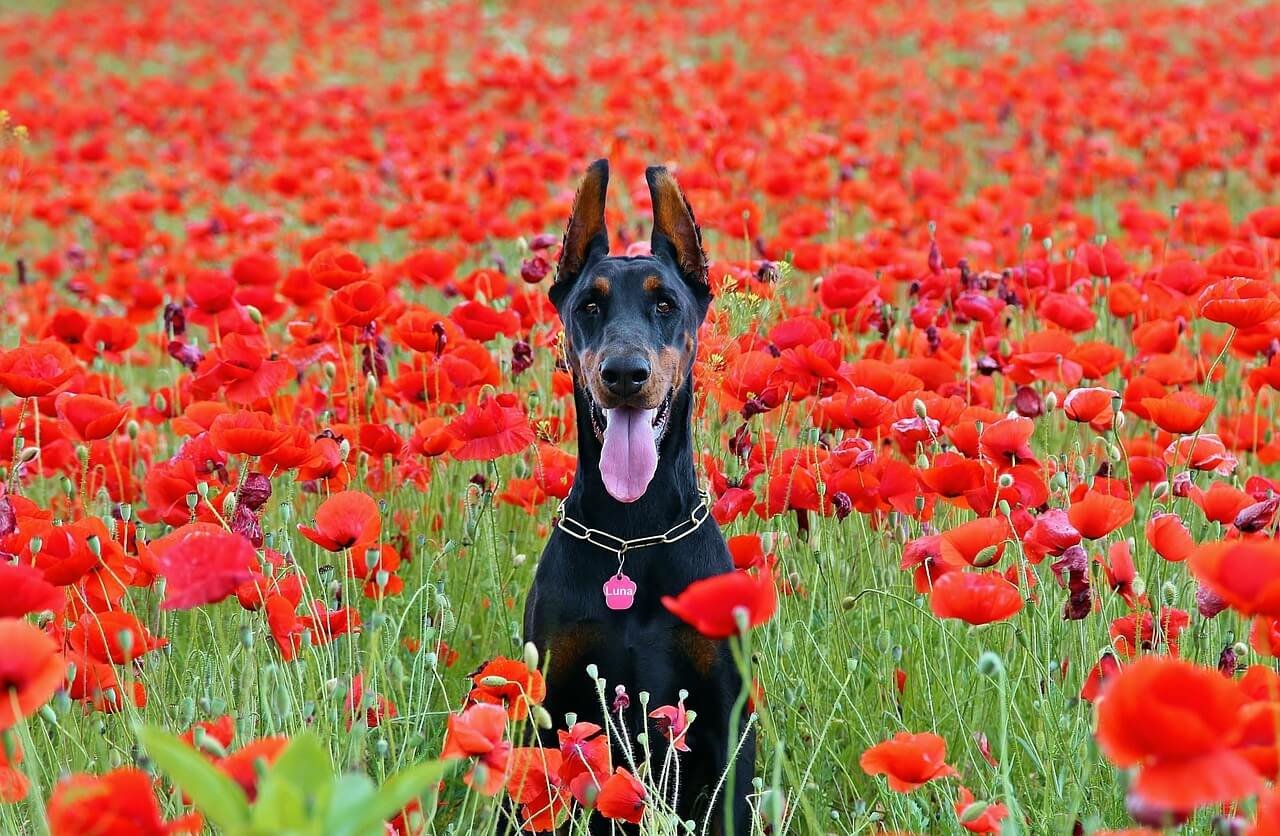Understanding Pack Mentality in Dogs: What Every Pet Owner Should Know
Dogs are inherently social animals, and their behavior is deeply rooted in their evolutionary history as pack-oriented creatures. The concept of “pack mentality” refers to the natural instincts that drive dogs to seek social structures, hierarchy, and companionship. Whether you’re raising a single dog or managing a multi-dog household, understanding pack mentality can help you build a stronger bond with your furry friend and create a harmonious environment. In this blog post, we’ll explore what pack mentality means for dogs, how it influences their behavior, and practical tips for fostering healthy relationships within your “pack.” Let’s dive into the fascinating world of canine social dynamics!
What Is Pack Mentality in Dogs? Breaking It Down
Pack mentality in dogs stems from their ancestry as wolves, who rely on a structured social system to survive. While domesticated dogs have evolved significantly, many still exhibit behaviors tied to pack instincts. Here’s an overview of what pack mentality entails:
Hierarchy Awareness: Dogs naturally recognize and respect leadership roles within a group, often seeking guidance from a dominant figure.
Social Bonds: Dogs thrive on forming strong connections with their human family or other pets, viewing them as part of their pack.
Protective Instincts: Pack mentality drives dogs to protect their group, whether it’s guarding territory or showing loyalty to their humans.
Communication Through Behavior: Dogs use body language, vocalizations, and actions to establish and maintain their place in the pack.
Desire for Belonging: A sense of belonging is crucial for a dog’s emotional well-being, reinforcing their need for social interaction.
Understanding these aspects of pack mentality helps explain why dogs behave the way they do and highlights the importance of fulfilling their social needs.
Signs Your Dog Exhibits Pack Mentality
Recognizing pack mentality in your dog’s behavior can provide valuable insights into their emotional state and social preferences. Here are some common signs that your dog is influenced by pack instincts:
Following You Around: If your dog constantly shadows you, they likely view you as their leader and primary pack member.
Resource Guarding: Protecting food, toys, or spaces can stem from a desire to assert their role within the pack.
Seeking Affection: Frequent cuddling or leaning against you shows their need for connection and reassurance.
Reacting to Strangers: Growling or barking at unfamiliar people or animals may indicate protective instincts toward their pack.
Playing Submissively: Rolling onto their back or avoiding eye contact during play signals recognition of your dominance.
These behaviors reflect your dog’s innate desire to fit into a social structure. By acknowledging and addressing these instincts, you can strengthen your relationship with your pet.
Check this guide 👉Dog Brain vs Human Brain: Best 7 Expert Tips!
Check this guide 👉Nasal Adenocarcinoma in Dogs: Best 7 Health Tips!

Positive Aspects of Pack Mentality | Challenges of Pack Mentality |
|---|---|
Encourages strong bonds with owners | Can lead to resource guarding or jealousy |
Promotes loyalty and protection | May cause anxiety if left alone too long |
Helps establish clear leadership | Risk of dominance-related aggression |
Enhances socialization skills | Difficulty integrating new pets into the pack |
Provides a sense of security for dogs | Over-reliance on the owner for direction |
How to Foster a Healthy Pack Dynamic with Your Dog
Creating a positive pack dynamic requires patience, consistency, and clear communication. By establishing yourself as a calm and confident leader, you can meet your dog’s social needs while maintaining harmony. Here are some strategies to foster a healthy pack dynamic:
Set Boundaries Early: Teach your dog basic commands and house rules to reinforce structure and consistency.
Practice Positive Reinforcement: Reward good behavior with treats, praise, or playtime to encourage cooperation.
Spend Quality Time Together: Engage in activities like walks, training sessions, or playtime to strengthen your bond.
Introduce New Pets Gradually: Allow time for introductions and supervision when adding another animal to the household.
Avoid Punishment-Based Training: Harsh discipline can damage trust and disrupt the pack dynamic.
By prioritizing mutual respect and understanding, you can cultivate a peaceful and loving environment where your dog feels secure and valued.
Common Misconceptions About Pack Mentality in Dogs
There are several myths surrounding pack mentality that can lead to misunderstandings about canine behavior. Clearing up these misconceptions ensures you approach your dog’s needs with accurate information. Here’s what you should know:
Myth: Dogs View Humans as Part of Their Pack in the Same Way Wolves Do: While dogs form close bonds with humans, their relationships differ significantly from wild wolf packs.
Myth: Dominance Training Is Necessary for Leadership: Modern training methods emphasize positive reinforcement over outdated dominance theories.
Myth: Only Certain Breeds Exhibit Pack Mentality: All dogs, regardless of breed, share an inherent need for social connection and structure.
Myth: Single Dogs Don’t Have Pack Instincts: Even solo dogs consider their human family their pack and rely on them for companionship.
Myth: Pack Mentality Always Leads to Aggression: With proper guidance, pack instincts can enhance bonding rather than cause conflict.
By debunking these myths, you can better understand your dog’s true nature and respond appropriately to their needs.
Managing Pack Dynamics When Multiple Dogs Are Involved
In multi-dog households, dominance issues can arise as dogs establish their roles within the pack. While some rivalry is normal, excessive tension can disrupt harmony. Here’s how to address and manage dominance-related challenges effectively:
Observe Interactions: Pay attention to which dog assumes leadership roles during activities like eating or playing.
Feed Dogs Separately: Avoid resource competition by feeding each dog in their own space to reduce stress and potential aggression.
Reinforce Your Role as Leader: Consistently enforce rules and boundaries to prevent one dog from dominating others.
Provide Individual Attention: Ensure each dog receives one-on-one time with you to prevent feelings of neglect or jealousy.
Use Calm Energy: Model calm behavior during conflicts to de-escalate tension and encourage peaceful resolutions.
By addressing dominance issues proactively, you can maintain a balanced and cooperative environment for all members of your furry pack.
Fun Ways to Reinforce Your Dog’s Sense of Belonging
Engaging in activities that emphasize teamwork and connection can strengthen the bond between you and your dog—or among multiple dogs in your household. These activities not only satisfy their social instincts but also enhance trust and loyalty. Here are some ideas:
Group Walks: Walking together reinforces the sense of unity and allows dogs to explore as a team.
Training Sessions: Teach commands or tricks that require cooperation, fostering mutual respect and communication.
Interactive Games: Play tug-of-war or fetch, ensuring all dogs participate equally to avoid feelings of exclusion.
Sniffaris: Take your dog(s) on sensory adventures where they can sniff and explore new environments together.
Cuddle Time: Spend quiet moments petting or relaxing with your dog(s) to nurture emotional closeness.
These activities help solidify the pack dynamic while providing physical and mental stimulation for your dogs.
How to Tell If Your Dog Is Happy and Confident in Their Social Role
A secure and content dog is more likely to exhibit relaxed, confident behavior, indicating they feel safe and valued within their pack. Recognizing these signs helps ensure your efforts to foster a healthy pack dynamic are paying off. Here’s what to look for:
Relaxed Body Language: A loose posture, wagging tail, and soft eyes suggest comfort and confidence.
Willingness to Follow Commands: Obedience reflects trust in your leadership and acceptance of their role.
Playful Behavior: Engaging in play without aggression shows they feel secure in their relationships.
Minimal Resource Guarding: Sharing toys or food calmly indicates they don’t feel threatened by others.
Adaptability to Changes: Adjusting well to new routines or additions to the household demonstrates emotional stability.
When your dog exhibits these behaviors, it’s a clear sign they feel loved, secure, and integrated into their pack.
Frequently Asked Questions About Pack Mentality in Dogs
What does pack mentality mean for dogs?
It refers to their instinctive need for social structure, leadership, and companionship within a group.
Do all dogs exhibit pack mentality?
Yes, most dogs display some level of pack-oriented behavior, though the intensity varies by individual.
How can I become my dog’s pack leader?
Establish clear boundaries, remain consistent, and use positive reinforcement to build trust and respect.
Is pack mentality bad for dogs?
No, it’s a natural instinct; however, improper handling can lead to behavioral issues.
Can pack mentality cause separation anxiety?
Yes, if a dog becomes overly reliant on their pack, they may struggle when left alone.
Final Thoughts: Embracing Your Role in Your Dog’s Pack
Understanding pack mentality is key to nurturing a happy, well-adjusted dog. By recognizing your role as a leader and providing a stable, loving environment, you can fulfill your dog’s social instincts and strengthen your bond. Remember, every dog is unique, so tailoring your approach to their personality and needs is essential. Whether you’re managing a single dog or a multi-pet household, embracing pack mentality allows you to create a harmonious and joyful home where everyone thrives—including your four-legged best friend.
Understanding Scabs in Dogs Ears: Best 7 Tips! Learn how to identify, treat, and prevent scabs in your dog’s ears for optimal ear health.
Is Cinnamon Bad for Dogs? Best 7 Health Tips! Discover safe ways to use cinnamon, risks to avoid, and expert advice to keep your dog healthy.
Can Dogs Get Pneumonia from Humans? Best 7 Tips! Learn how to protect your dog, understand transmission risks, and ensure their respiratory health.
Can Dog Urine Make You Sick? Best 7 Health Tips! Learn how to stay safe, prevent illness, and handle exposure to dog urine effectively.





